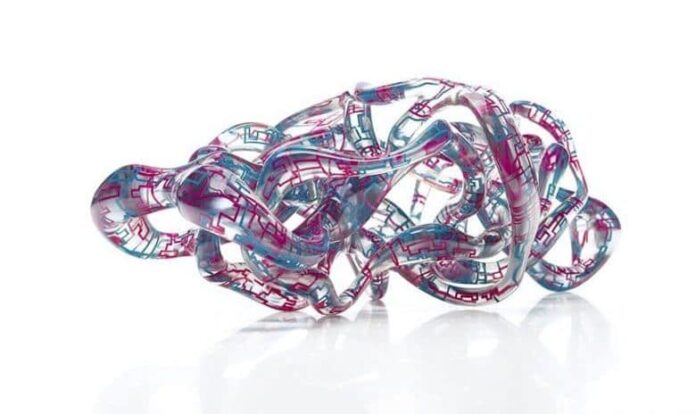Author: Ira Somers
Date: Apr 27 2018
Publisher: Massivit3D
Wait! Don’t trash that egg sandwich. There’s an artist who can use it in her next contemporary fresco. And if you’re not going to reuse that screw. . .hand it over. Andrew Meyers might want it for his portrait of Princess Di. Artists are known for pushing boundaries and for disrupting our eyeballs by using unconventional materials. But no disruption can compare with the increasing number of artists using custom 3D printing to bring their creations to life. The growing popularity of this medium has lead to a question that is bothering some within the industry: Is it even considered art?
It’s a question that’s much older than 3D printing itself. Artists have continually employed new and unusual vehicles for their creations. In the case of 3D printing, embedded within the philosophical debate about what defines art, is another question, “Does 3D printing make art too easy?” After looking at the ingenious and tedious efforts of the following nine artists, you can decide the answers to both questions.
Don’t Tell These Nine Their Work Ain’t Art
These artists are thinking outside the proverbial and overused “box.” Their work not only employs 3D printing technology, which is original in its own right, but they use the technology in innovative ways or to break through the limitations of traditional processes.
1. Tomoko Nagao
Tomoko Nagao is a Japanese artist who reinterprets Renaissance masterpieces. In 2017, she strayed from her traditional oil and stencils on walls and canvases and traveled further back in time to create two micro-pop sculptures with a large 3D printer. Her Salome exhibit, 3D printed by Sisma Italia, put a funny spin on a biblical story and bridged an ancient event with modern technology.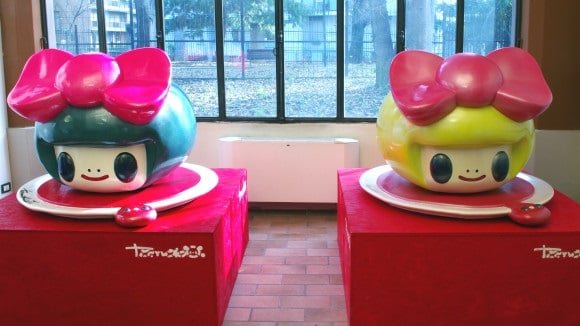
2. Neri Oxman
Neri Oxman is an architect, designer, internationally recognized artist, and professor at the MIT Media Lab. This PhD aims to push the limits of additive manufacturing using new materials like concrete and glass, and in fact even develops the machines to print them. Besides fashion wear and architecture, Neri uses 3D printing to create art.
3. Rob and Nick Carter
Rob and Nick Carter went back in time, too, but not to biblical times. They took a 400 year-old painting and recreated the scene outdoors. They used 3D printing to duplicate tree trunks. Nine of them. Then they bronzed each and placed them in a field. This real-life work is titled Bronze Oak Grove.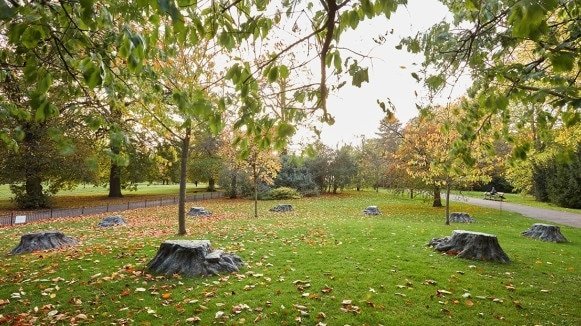
3D printing makes duplication easy and fast, but there are other reasons artists are turning to this technology.
4. Batsheba Grossman
Batsheba Grossman uses her mathematics background to create cool works of metal art. 3D printing allows her to produce the shapes she envisions, a feat impossible to achieve without the technology. Batsheba said, “If you show these to somebody who works in metal, they fall on the floor.”
Additive manufacturing, the more technical title for custom 3D printing, builds layer upon layer, allowing artists to create difficult curves, bends, and hollow points without the fear of damaging their work. What professional would not want to decrease risk in their work? What about being granted the the opportunity to create a greater range of designs?
5. Julian Voss-Andreae
Julian Voss-Andreae lives in Portland, Oregon, and creates larger-than-life outdoor monuments. 3D printing technology frees him to create arbitrary designs. Often, they are large format human figures, sometimes becoming invisible at different angles.
6. Dario Santacroce
Dario Santacroce is an Italian sculptor determined to create perfect forms. Traditional sculpting methods did not deliver the perfection he envisioned. The solution Dario sought lie in the preciseness of custom 3D design and printing. First, he created prototypes on his own MakerBot. Then, for the final work, he searched and found a printing company in Germany. Dario’s Spherical Creations interlock three spheres around an invisible triangle. And they’re perfect, thanks to 3D printing technology (and Dario’s determination).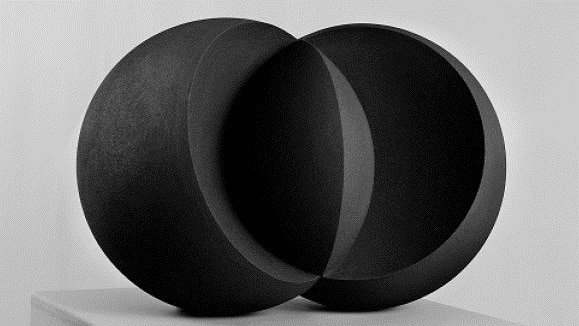
7. Gilles Azzaro
Do you remember President Barack Obama’s speech hailing 3D printing? You missed it? Well here it is. Gilles Azzaro captured that segment of the President’s State of the Union address and turned the digital voiceprint into a work of art. Showing the peaks and valleys of Obama’s voice, and guided by a line of light in sync with the President’s voice, Azzaro’s Next Industrial Revolution creatively combines multiple senses.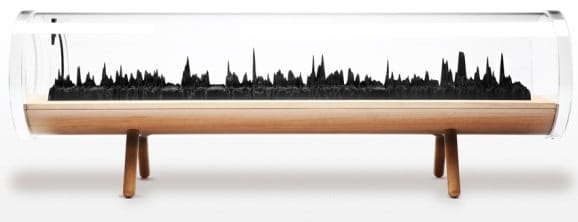
8. Ona Sadkowsky
Contemporary urban artist, Ona Sadkowsky, likes to be creative in a more “naughty” way. Putting her pastel paints to the side, Ona sketched a provocative 3-dimensional piece for an annual art fair. She sent the sketch to Dekom 3D Plus in her hometown of Zurich where the Dekom team turned her sketch into a computer-generated 3-dimensional model. Then they printed it on their Massivit 1800 3D printer. The final product was an eye-catching character that was popular at the fair, drawing lots of attendees to take photos with it.
9. Nick Ervinck
Nick Ervinck is known for adding color to his complex 3D-printed works of art. He uses CAD software to design his art and then sends it out for printing.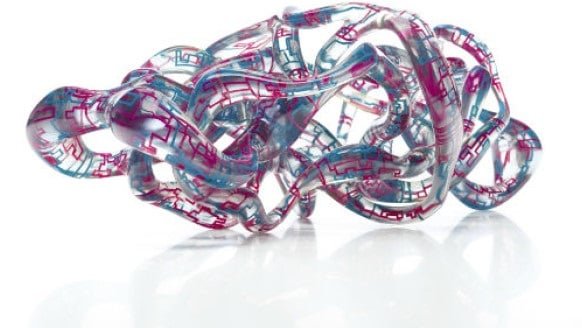
Bonus #10. Eyal Gever
Eyal Gever employed large format 3D printing to create a miniature model of the castle he was commissioned to decorate with a digital light show. The 4-meter long replica, seen above his desk, saved the artist from flying to the location to test and perfect his work before the actual show.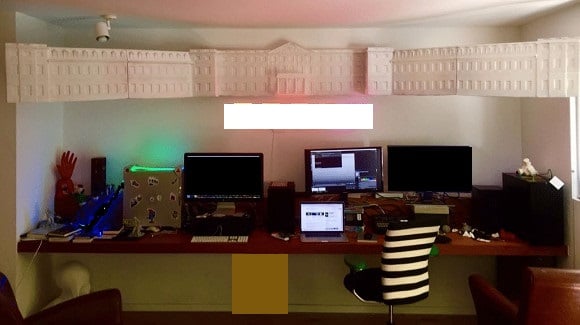
Growth in 3D Printed Art
3D printing technology is spreading, not only across more and more industries but within the art industry itself. With this growth, comes an increasing number of options for printing your work. There are desktop 3D printers, 3D printing hubs, and large format 3D printers available for your giant creations. With that in mind, to all the artists out there we say, Ask not what you can create with 3D printing, but Where will you have your next work printed?
Comment:
This article showed me a glimpse into the world of art with 3D printing. There are some cool artists pushing the boundaries of additive manufacturing but I think they can be pushed further. I really like the Julian Voss-Andreae sculptures and think that could be an interesting avenue to take.

